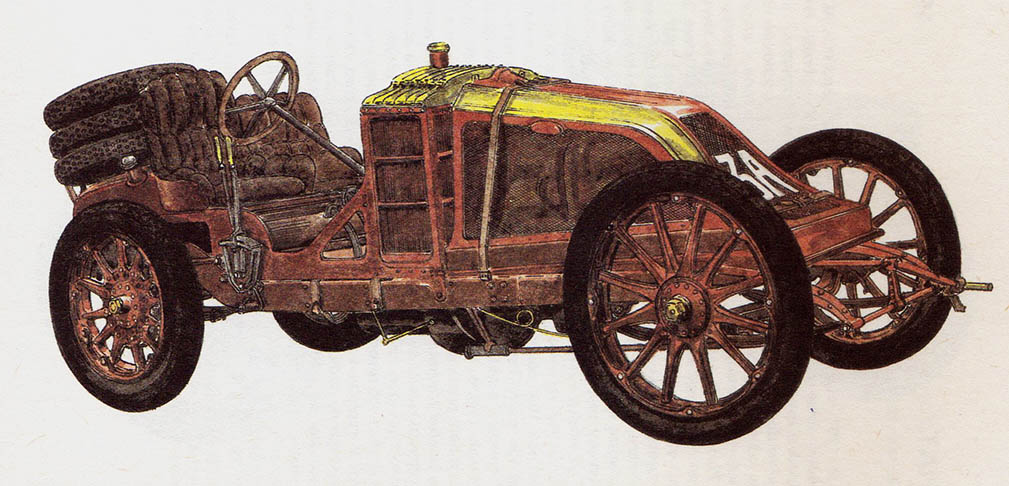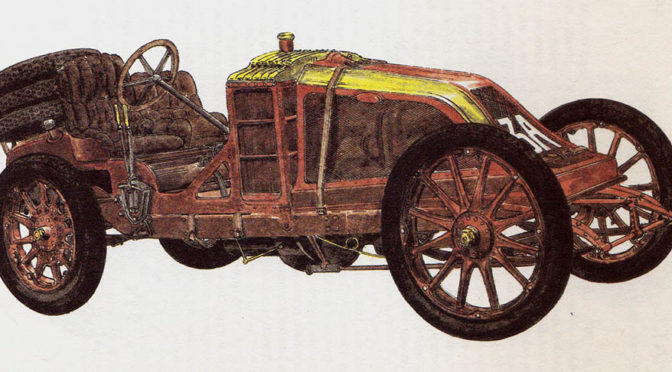RENAULT – year 1906
Renault Brothers, Billancourt, Paris, France.
The French Grand Prix race from 1906 year is considered the first Grand Prix competition, which later became the Formula World Championship 1. The race was organized by the French automobile club (Automobile Club de France - ACF). The original name was the ACF Grand Prix (ACF Grand Prix). The track was at Le Mans.
The representatives of de Dietrich companies stood at the first start, Clement, Blaze, Darracq, Gobron-Brillie, Gregoire, Hotchkiss, Panhard and Renault from France, FIAT and Itala from Italy, Mercedes from Germany. The cylinder capacity ranged from 7,4 liter (Gregoire) do 18,3 liter (Panhard Levassor). The only limitation was the weight of the car, whose upper limit was 1000 kg. The victory was determined by the application of André Michelin's new invention – exchangeable rims, which were used by Brasier companies, FIAT, Italy and Renault. Best travel time for one lap, and thus a track record, reached Nazzaro on a Fiat car, driving at an average speed 128 km/h. While removing the defect, Szisz riding a Renault overtook him, which with time 12:13:57 and average speed 101,34 km / h became the winner of the first Grand Prix race.

Renault Brothers, Billancourt, Paris, France.
The winning car's chassis consisted of a riveted steel frame, to which is attached a four-cylinder engine with a huge tubular radiator located behind the engine, driver's seat and fuel tank. Rigid axles were suspended on quarter-elliptical longitudinal springs. Mechanical drum brakes only acted on the rear wooden wheels. Engine, composed of two blocks of two cylinders, had non-replaceable cylinder heads, mechanically controlled side valves and thermosiphon cooling. Thanks to the diameter of the cylinders 166 mm and piston stroke 150 mm the total engine capacity has been reached 12 986 cm3. The mixture was ignited by a high-voltage magneto from Bosch. Maximum power 66,2 kW (90 KM) was achieved at 1200 RPM. Drive to the rear wheels was transmitted from the three-speed gearbox via a universal drive shaft, unlike commonly used chains. Very narrow rear track - only 1090 mm - made it possible to bypass the differential. The aerodynamic shape of the hood is achieved by placing the radiator behind the engine.
The unchanged Renault model took the next ACF Grand Prix race, organized in Dieppe a year later, second place. He was also successful in 1908 year in Dieppe (8 i 15 place) and at the America's Grand Prix (6 place).
